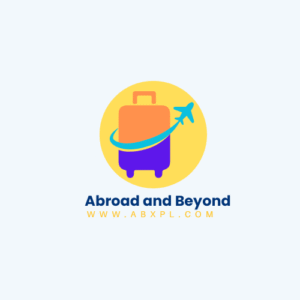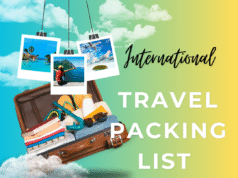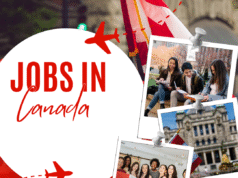If you’re exploring how to work permit in Canada, you’re joining millions of skilled workers, students, and remote professionals who see Canada as a safe, welcoming, and opportunity-rich destination. This in-depth, EEAT-friendly guide walks you through permit types (open vs employer-specific), eligibility, LMIA (Labour Market Impact Assessment), fees and timelines, step-by-step application instructions, job search strategy, relocation budgeting, cultural insights, digital nomad considerations, and long-term immigration pathways. It is designed to be readable, practical, and fully optimized for user intent whether you want a simple checklist or an expert deep dive.
Disclaimer (not legal advice): Immigration rules change. Always verify details on official Canadian government pages before you apply.
Table of Contents
- What a Canadian Work Permit Is (And Isn’t)
- Types of Canadian Work Permits (Open, Employer-Specific, LMIA-Exempt)
- Who Qualifies: Eligibility for a Canada Work Permit
- How to Work Permit in Canada: Step-by-Step Application
- LMIA Explained: Employer Requirements & Exemptions
- Documents Checklist (by Permit Type)
- Work Permit Fees, Biometrics, Medicals & Hidden Costs
- Processing Times, Upfront Medicals & Application Tips
- PGWP (Post-Graduation Work Permit) for International Students
- Open Work Permit Options for Spouses & Families
- Working Holiday & Youth Mobility (IEC)
- Digital Nomads in Canada: Remote Work, Tax, and Compliance
- Budgeting Your Move: Housing, Transport, Insurance & Savings
- Job Search Strategy (NOC/TEER, CV, LinkedIn, Offers, Scams)
- Workplace Culture, Rights & Safety Standards
- Taxes, SIN, Banking & Life Admin
- Provincial Pathways & Where Jobs Are Growing
- From Work to Permanent Residency (Express Entry, PNP, CEC)
- Special Sectors: Tech, Healthcare, Construction, Hospitality & Agri-Food
- Frequently Asked Questions (FAQ)
- Common Mistakes & Application Red Flags
- Quick Checklists (Pre-Apply, Submit, After Landing)
- Conclusion: Your Next Steps on how to work permit in Canada
- Social Media Snippets (Twitter/X, Facebook, Instagram)
What a Canadian Work Permit Is (And Isn’t)
What it is: A document that authorizes you to work in Canada temporarily under specified conditions either open (you can work for most employers) or employer-specific (you must work for the employer named on your permit).
What it isn’t:
- It isn’t automatic entry to Canada (you still need to meet entry requirements).
- It isn’t permanent residency (though it can be a stepping stone).
- It isn’t always transferable (employer-specific permits tie you to a job and employer).
When learning how to work permit in Canada, remember that the right permit depends on your situation: student, skilled worker, spouse, intra-company transferee, seasonal worker, researcher, or youth traveler.
Types of Canadian Work Permits (Use-Case Driven)
1) Open Work Permit Canada (no employer named)
- Who it suits: Flexibility seekers, spouses/partners of eligible students/workers, recent graduates on PGWP, certain PR applicants (BOWP), vulnerable workers.
- Pros: Work for most employers; easier job mobility.
- Cons: Some streams require you to already be in Canada or meet specific criteria.
2) Employer-Specific (Closed) Work Permit (employer named)
- Who it suits: Applicants with a concrete job offer where the company will support the process.
- Usually requires: LMIA under the Temporary Foreign Worker Program (TFWP), unless exempt.
- Pros: Clear, job-anchored path; often better for niche roles.
- Cons: Mobility limits; if the job ends, the permit may no longer be valid.
3) LMIA-Exempt Work Permits (International Mobility Program – IMP)
- Who it suits: Intra-company transferees, CUSMA/USMCA professionals, academics/researchers, certain entrepreneurs, Francophone Mobility, charity workers, and other public-policy categories.
- Pros: Faster for some categories; employer avoids LMIA.
- Cons: Strict category rules; documentation still rigorous.
4) Post-Graduation Work Permit (PGWP)
- Who it suits: International graduates of eligible Canadian programs.
- Length: Up to 3 years, depending on program length.
- Pathway: Often the bridge from graduate study to PR via Canadian work experience.
5) International Experience Canada (IEC) – Working Holiday/Co-op/Young Professionals
- Who it suits: Citizens of partner countries (age limits apply), seeking working holiday, co-op placements, or young professional experience.
- Pros: Often open work permit (Working Holiday stream); great for travelers.
- Cons: Quotas, eligibility by nationality, age limits.
Who Qualifies: Eligibility for a Canada Work Permit
General Eligibility (applies broadly)
- Valid passport & travel documents.
- Proof you’ll leave Canada when your permit ends (unless applying for PR).
- Enough funds to support yourself (and family).
- Clean criminal record (police certificate).
- Good health if required (medical exam).
- Admissibility at the border.
Eligibility by Type
- Employer-Specific (TFWP): Genuine job offer + positive LMIA.
- IMP (LMIA-Exempt): Fit a specific exemption category (e.g., intra-company transferee).
- PGWP: Graduate of an eligible Canadian DLI/program; apply within allowable timelines.
- Spousal Open Work Permit: Spouse/partner of eligible student/worker/PR applicant.
- IEC: Citizenship in a partner country + meet age/insurance/funds criteria.
Pro tip: Before you commit, map your profile to the correct permit. This is the foundation of how to work permit in Canada the right way.
How to Work Permit in Canada: Step-by-Step Application (Outside or Inside Canada)
Step 1: Choose the Right Route
- Open Work Permit, Employer-Specific (LMIA), or LMIA-Exempt (IMP)?
- Student graduate? Consider PGWP.
- Spouse of student/worker? Consider Spousal OWP.
Step 2: Confirm Employer/Program Eligibility
- If employer-specific, confirm the employer will support LMIA (unless exempt).
- If LMIA-exempt, identify the precise exemption code/category.
Step 3: Prepare Documents
- Passport, digital photos, forms, fees.
- Job offer + contract (for employer-specific).
- LMIA (if required) or exemption documents.
- Police certificate(s), medical exam (if needed).
- Proof of funds, travel history, résumé/CV, education credentials.
- If PGWP: transcripts, completion letter.
Step 4: Apply Online
- Create an online account; complete tailored questionnaire to generate forms.
- Upload complete documentation to minimize delays.
- Pay fees: CAD 155 (work permit) + CAD 100 (if open WP), CAD 85 biometrics.
Step 5: Biometrics & Medicals
- Schedule biometrics prompt.
- If required, complete an upfront medical with a panel physician for faster processing.
Step 6: Processing & Passport Request
- Track messages for additional documents.
- If approved, you’ll receive a Port of Entry (POE) letter of introduction.
Step 7: Fly & Land
- Present POE letter, proof of job (if employer-specific), funds, and other documents.
- Border officer issues your physical work permit.
Processing times vary by country and category. File early and keep everything truthful, consistent, and complete.
LMIA Explained: Employer Requirements & Exemptions
LMIA (Labour Market Impact Assessment) asks: “Would hiring this foreign worker harm the Canadian labor market?” Employers must show recruitment efforts, pay prevailing wages, and meet compliance rules. A positive LMIA supports your employer-specific permit.
LMIA-Exempt (IMP): Skip the LMIA when there’s a broader Canadian interest, trade agreement, or reciprocal benefit. Common examples:
- Intra-Company Transfers (ICT).
- CUSMA/USMCA professionals (for eligible occupations).
- International researchers, academics, performing artists under certain codes.
- Francophone Mobility outside Quebec.
- Entrepreneur/self-employed categories (strict criteria).
If your employer is unsure, they should consult official government guidance to confirm whether LMIA is required or an exemption applies.
Documents Checklist (Tailor for Your Case)
Core for Most Applicants
- Passport (valid beyond intended stay).
- Application forms (generated online).
- Digital photos.
- Fees (work permit, open permit fee if applicable, biometrics).
- Police certificate(s).
- Medical exam (if required healthcare, childcare, long stays, certain countries).
- Proof of funds and accommodation plans.
- Resume/CV, education credentials, professional licenses (if relevant).
Employer-Specific (TFWP)
- Job offer & signed contract, salary, duties, hours.
- Positive LMIA + LMIA number.
- Company info (if requested): business number, address, contact.
LMIA-Exempt (IMP)
- Offer of employment number (employer submits via Employer Portal).
- Exemption code rationale (e.g., ICT, CUSMA).
- Supporting evidence (corporate relationship, specialized knowledge, degree, etc.).
PGWP
- Completion letter + final transcript from your DLI.
- Proof you studied full-time and met program length rules.
Spousal Open Work Permit
- Proof of relationship.
- Evidence spouse/partner is an eligible student/worker/PR applicant (permit, enrollment, employment letter).
Work Permit Fees, Biometrics, Medicals & Hidden Costs
- Work permit fee: CAD 155
- Open work permit holder fee: CAD 100 (if applicable)
- Biometrics: CAD 85 (per person)
- Medical exam: CAD ~150–300 (location dependent)
- Police certificates: CAD 20–100
- Translations & notarizations: varies
- Courier/printing: modest but plan for it
Budget tip: Reserve CAD 1,000–1,500 for the full application process (excluding flights & settlement funds).
For settlement, plan first-month cash for rent + deposit, basic furniture, phone plan, transit pass, winter clothing (if applicable), and food.
Processing Times, Upfront Medicals & Application Tips
- Processing times depend on your country, permit type, and seasonality.
- Upfront medicals can reduce delays for roles that require them.
- Be consistent: Dates, addresses, job history should match across forms, résumé, and letters.
- Respond fast to document requests.
- Don’t overclaim: Misrepresentation can mean refusals and bans.
- Save PDFs/screenshots of everything for your records.
PGWP (Post-Graduation Work Permit): Study-to-Work Bridge
For international students completing eligible programs at designated learning institutions (DLIs), PGWP provides an open work permit (up to 3 years based on program length). It’s a core path in how to work permit in Canada for graduates seeking Canadian experience toward CEC or Express Entry.
Key points:
- Apply within allowed time after getting the completion letter.
- Work full-time while your PGWP is processed (conditions apply if you applied before your study permit expired and were eligible to work).
- Combine PGWP work with co-op experience to strengthen your profile for PR.
Open Work Permit Options for Spouses & Families
- Spouse/Partner of an International Student: Often eligible for a Spousal Open Work Permit if the student is in an eligible program.
- Spouse/Partner of a Skilled Worker: If the principal worker holds a qualifying job/permit, spouses may get an open permit.
- Accompanying Children: School access depends on permit status and province.
This is an excellent route for dual-career families and supports relocation decisions with fewer financial risks.
Working Holiday & Youth Mobility (IEC)
If you hold citizenship in an IEC partner country, you may be able to get:
- Working Holiday: Usually an open work permit ideal for travel + casual work.
- Young Professionals: Employer-specific; helps build skilled Canadian experience.
- International Co-op (Internship): For students securing internships with Canadian employers.
Quotas and age limits apply; plan early.
Digital Nomads in Canada: Remote Work, Tax, and Compliance
Canada has no dedicated “digital nomad visa.” If you work for a non-Canadian employer and simply perform your tasks remotely while visiting, you may be in a gray area that requires careful planning:
- Visitor status doesn’t authorize you to work for a Canadian employer.
- Open/Employer-Specific permits are required for Canadian employment.
- Tax residency depends on ties and physical presence. Long stays can trigger tax obligations.
- Health insurance: Consider private coverage if you’re not eligible for provincial health yet.
For location-independent professionals, consider a Canadian employer sponsorship, or a transition from visitor to worker if an offer materializes.
You can explore our Digital Nomad Canada Visa for more information
Budgeting Your Move: Housing, Transport, Insurance & Savings
Monthly estimates (single person, shared housing):
- Rent: CAD 800–1,500 (city-dependent; Toronto/Vancouver higher)
- Utilities + Internet: CAD 100–200
- Transit: CAD 100–160 (monthly pass)
- Groceries: CAD 300–500
- Phone: CAD 40–80
- Insurance: Variable—consider travel and then provincial health eligibility
Money-saving ideas:
- Arrive with temporary housing booked for 2–3 weeks.
- Use transit passes, student/worker discounts.
- Buy winter staples second-hand.
- Share housing near transit lines to avoid car costs.
For gear, flights, and insurance breakdowns, check broader travel resources and planning posts on International Travel Packing List
Job Search Strategy on How to Work Permit in Canada (NOC/TEER, CV, LinkedIn, Offers, Scams)
Understand NOC/TEER
Canada classifies jobs under the National Occupational Classification (NOC) with TEER levels. Match your job offer to the right NOC code when you apply.
Build a Canadian-Style Résumé
- 1–2 pages, clean layout, achievement bullets with metrics.
- Tailor for each posting; mirror keywords from the job ad.
- Include LinkedIn URL; keep your profile current and keyword-rich.
Where to Look
- Canada’s Job Bank and major job boards.
- Company career pages; provincial job fairs; university alumni networks.
- Industry associations and meetups.
Offer Letters & Red Flags
- Real offers include salary, duties, hours, location.
- If an employer asks you to pay for your job, it’s a scam.
- Verify employer details; research reviews and corporate registration.
Workplace Culture, Rights & Safety Standards
- Punctuality & Respect: On time, professional communication, inclusive language.
- Harassment-free: Strong policies; report issues to HR or provincial boards.
- Breaks, Overtime, Stat Holidays: Governed by provincial standards.
- Safety First: Training and protective equipment are employer responsibilities in regulated roles.
Knowing these norms helps you succeed beyond just the paperwork of how to work permit in Canada.
Taxes, SIN, Banking & Life Admin
- SIN (Social Insurance Number): Apply after arrival; necessary for work and taxes.
- Bank Account: Newcomer packages often include fee waivers.
- Taxes: File annually; employers issue T4 slips. Keep pay stubs and records.
- Health Care: Provincial systems have waiting periods get interim private insurance.
Provincial Pathways & Where Jobs Are Growing
- Ontario & British Columbia: Tech, finance, health.
- Alberta & Saskatchewan: Energy, trades, logistics, agriculture.
- Manitoba & Atlantic Canada: Nursing, hospitality, seafood/agri-food, logistics.
- Quebec: Distinct labor market and French language expectations.
Provincial Nominee Programs (PNPs) often align with local labor needs great for targeted applicants.
From Work to Permanent Residency (Express Entry, PNP, CEC)
Express Entry (federal) ranks candidates on work experience, education, language, and age. Canadian experience earns valuable points another reason how to work permit in Canada matters for long-term goals.
Canadian Experience Class (CEC): Ideal for those with Canadian skilled work (usually at least 1 year).
Provincial Nominee Programs (PNPs): Nomination boosts your PR chances if your profile fits a province’s needs.
Other routes: Atlantic Immigration Program, Rural & Northern Immigration Pilot (RNIP), Agri-Food Pilot, and occupation-specific programs.
Special Sectors: Where Work Permits Shine
Tech & Digital
- Software engineers, data analysts, AI/ML specialists, cybersecurity, cloud.
- Global Talent Stream can expedite certain tech roles (employer-driven).
Healthcare
- Nurses, lab technologists, physicians (licensing varies), care aides.
- Provinces actively recruit; credential recognition may be required.
Construction & Skilled Trades
- Electricians, welders, carpenters, heavy-equipment operators.
- Certifications and safety tickets matter.
Hospitality & Tourism
- Chefs, line cooks, supervisors, hotel operations—seasonality may apply.
Agri-Food & Seasonal Programs
- Farm workers (SAWP), meat processing, greenhouse roles—often employer-specific permits.
Frequently Asked Questions (FAQ)
Q1: Can I work in Canada without a job offer?
Yes open work permits (e.g., PGWP, certain spousal permits, some PR-linked cases) don’t require a job offer. IEC Working Holiday can also be open for eligible nationalities.
Q2: What is LMIA and do I need it?
LMIA is a labor market test. If your permit is employer-specific under TFWP, you likely need a positive LMIA, unless exempt under IMP.
Q3: How long does it take to get a work permit?
It varies by country, season, and permit type. File early, submit complete documents, and monitor updates.
Q4: Can my spouse work?
Often yes spouses/partners of eligible workers/students can apply for a Spousal Open Work Permit.
Q5: Do I need a medical exam?
If you’ll work in health/childcare or meet certain risk criteria, you likely need an upfront medical with a panel physician.
Q6: Can a work permit lead to PR?
Absolutely. Many candidates use Canadian work experience to qualify under CEC, PNP, or broader Express Entry.
Q7: Is Canada suitable for digital nomads?
It’s great for infrastructure and quality of life, but a visitor doesn’t authorize work for a Canadian employer. Plan carefully for status, tax, and insurance.
Common Mistakes & Application Red Flags in How to Work Permit in Canada
- Picking the wrong permit category.
- Incomplete documents or inconsistent details.
- Misunderstanding LMIA vs LMIA-exempt rules.
- Paying scammers for a “guaranteed job.”
- Ignoring medical or biometrics requirements.
- Missing deadlines (PGWP timelines are strict).
- Not planning settlement funds and first-month costs.
Quick Checklists to Master How to Work Permit in Canada
Pre-Application
- □ Confirm correct permit (Open, Employer-Specific, LMIA-Exempt, PGWP).
- □ Secure job offer or IEC pool (if applicable).
- □ Gather passports, education, experience, police clearance.
- □ Book panel physician (if needed).
- □ Save funds for fees + first-month costs.
Submission Package
- □ Complete online forms accurately.
- □ Upload all documents in required formats.
- □ Pay fees (work permit + open fee if applicable + biometrics).
- □ Track file and respond quickly to additional requests.
After Landing
- □ Obtain SIN, open bank account, phone plan.
- □ Apply for provincial health coverage.
- □ Understand employment standards and workplace safety.
- □ Keep records (pay stubs, T4s) for taxes and PR.
Conclusion: Your Next Steps on how to work permit in Canada
Mastering how to work permit in Canada means choosing the right permit (open, employer-specific, or LMIA-exempt), assembling a persuasive, fully documented application, budgeting for fees and settlement costs, and aligning your job search with Canada’s real labor needs. From PGWP options for graduates to Spousal Open Work Permits, IEC Working Holiday, and employer-backed LMIA, there’s a viable pathway for most profiles. Combine that with smart relocation planning, cultural readiness, and a clear path to PR through Express Entry or PNPs, and you’ve got a realistic, step-by-step roadmap to build a life and career in one of the world’s safest, most diverse countries.







